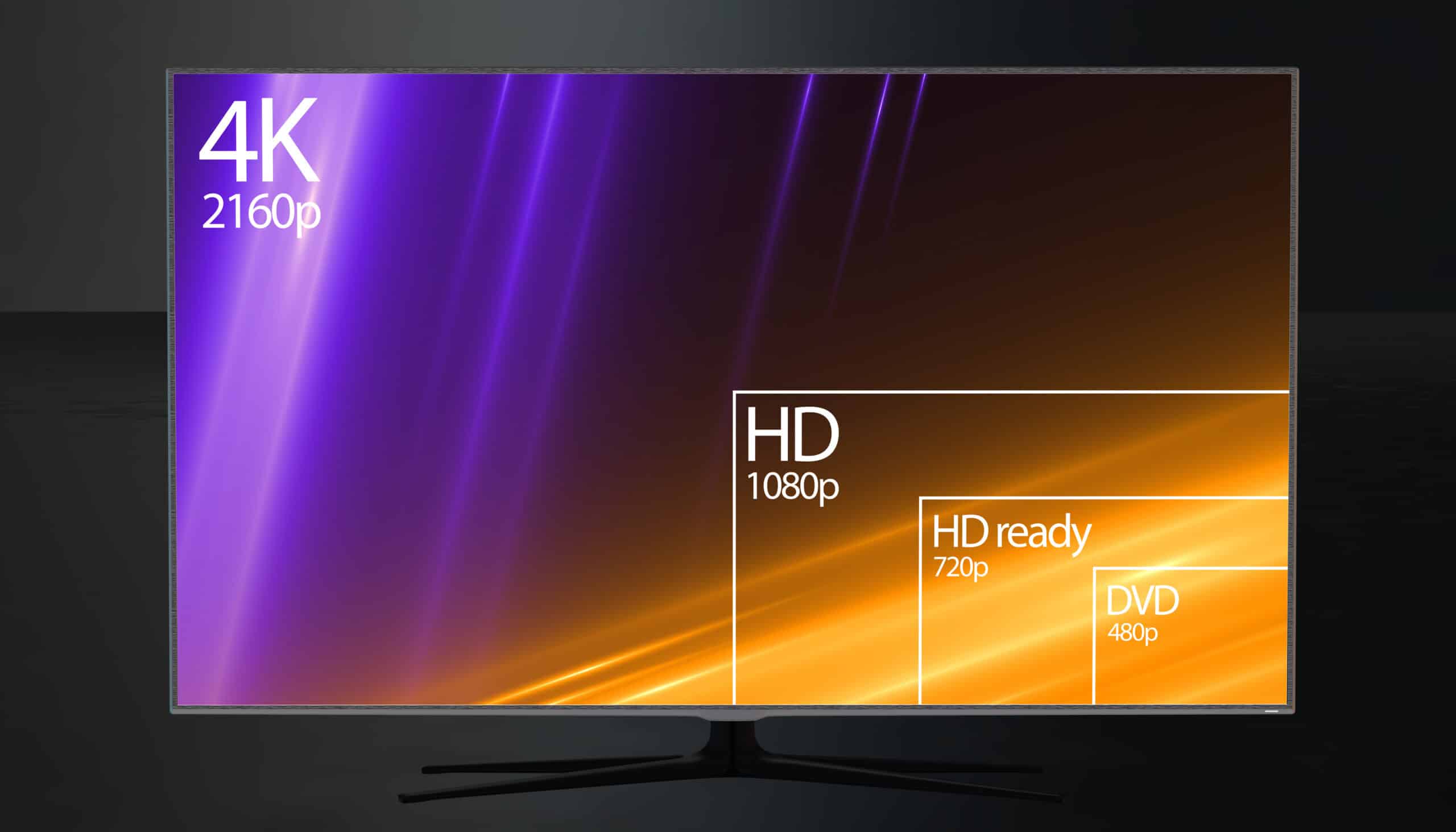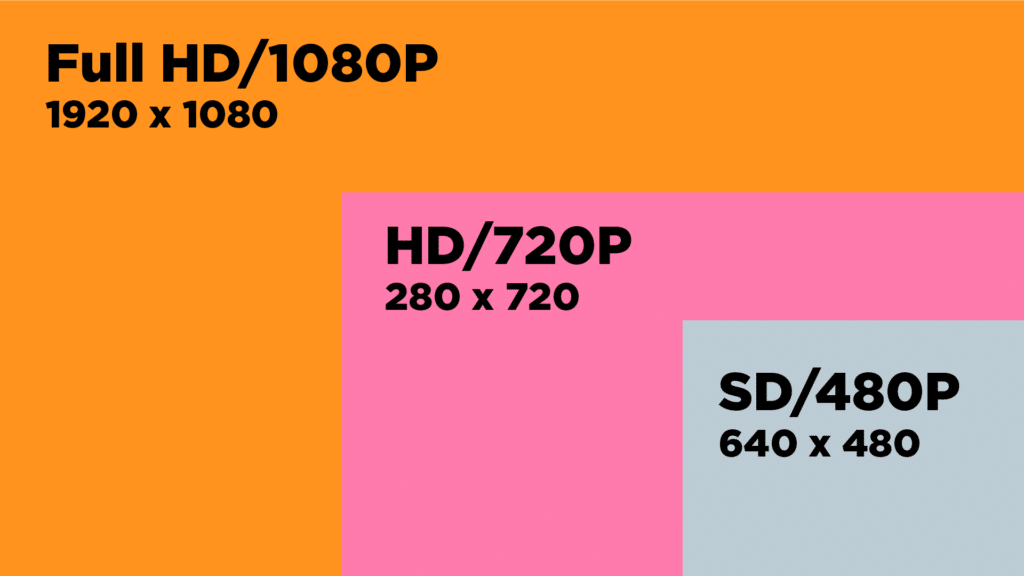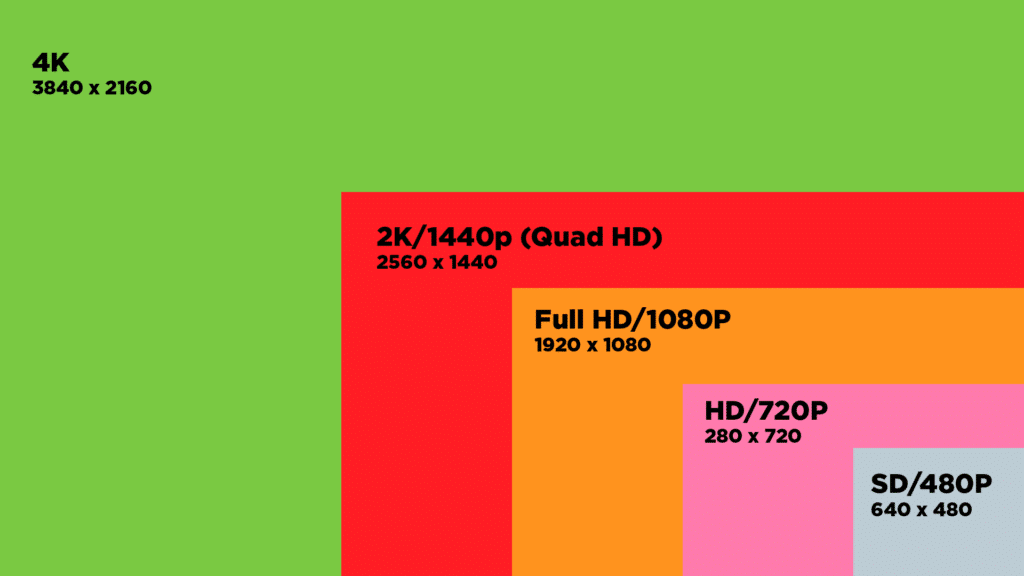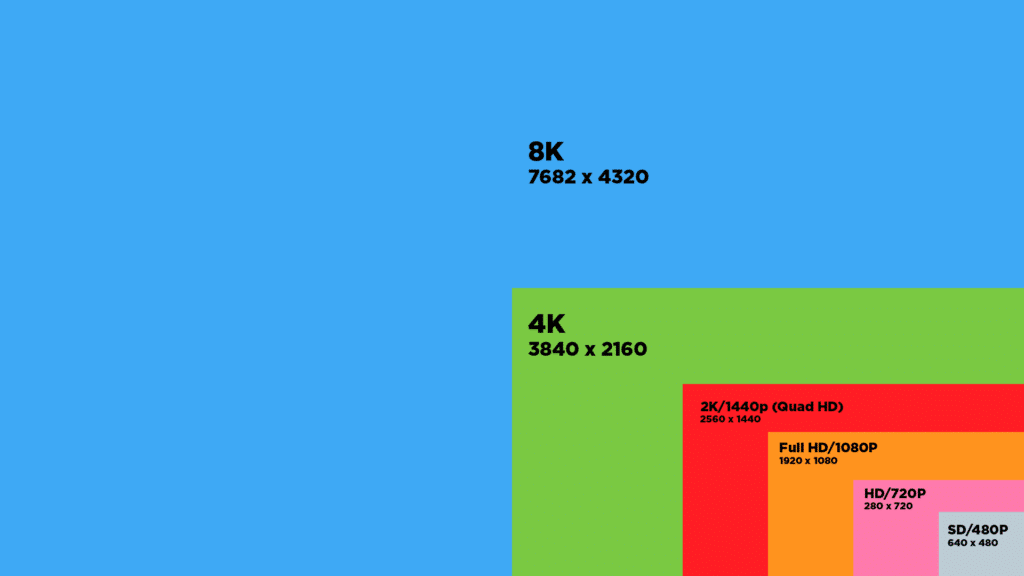
Understanding Video Resolutions: A Comprehensive Guide
If you’re starting to create and upload your own video content you might get hit with a raft of choices when it comes to video resolution. What should you upload? 720p? 4K? It’s a key factor that determines the quality of your video content and can significantly impact the viewer’s experience. Whether you’re a video marketer, a content creator, or just someone who enjoys streaming videos online, understanding different video resolutions can help you make informed decisions about your video production and consumption. This article will delve into the intricacies of video resolutions, such 480P, 720P, and 1080P and 4K, and help you answer the question: Which is better?
What is Video Resolution?
Video resolution refers to the number of distinct pixels that could be displayed in each dimension. It is usually quoted as width × height, with the units in pixels. For instance, “720p” refers to a video resolution of 1280 pixels wide by 720 pixels tall. The “p” stands for progressive scan or non-interlaced, which means the image is not split into separate lines and then combined.
480P: The Standard Definition
This is what you used to watch on your tele ‘back in the day’ before big, widescreen TV’s and HDTV came in. 480P, often referred to as SD (Standard Definition), is still widely used today. It only has a resolution of 640 pixels wide by 480 pixels tall which is pretty tiny considering the size modern TV’s can go. If you’ve ever tuned into a non-HD terrestrial TV channel and found it looks blurred or slightly pixelated, that’s because it’s broadcast in 480p. So is this now an antiquated relic? Not quite. While it may not provide the sharpest image, it requires less bandwidth and storage space compared to higher resolutions. This makes it a popular choice for online streaming, especially when internet speed is a concern.
720P: The Leap into High Definition
720P, also known as HD (High Definition), offers a significant step up from 480P. With a resolution of 1280 pixels by 720 pixels, it provides a clearer, more detailed picture. 720P is often used for broadcasting TV shows, YouTube videos, and streaming where a balance between quality and file size is essential.
1080P: The Full High Definition
1080P, known as FHD (Full High Definition), is the most popular resolution in the video industry. With a resolution of 1920 pixels by 1080 pixels, it offers superior detail and clarity over 720P that is ideal for Blu-ray movies, YouTube, and many streaming services like Netflix and Hulu. Most modern computers, and even mobile devices, are capable of editing, storing and streaming 1080P so unless bandwidth is a major issue 1080P is a great choice for video production.

The Evolution of Video Resolution: From 2K to 8K
Once you go above 1080P you’re into the realm of ultra-high-definition (UHD) resolutions. These are the resolutions that offer much higher pixel counts, but push the boundaries of what’s practical given the extra demands on the hardware needed to create them, the memory space required to store them, and the bandwidth required to upload and stream them. You are also in the realm of diminishing returns as to the actual quality of the end product. Whilst 4K is undeniably better than 1080P, it is nowhere near as big a jump as the gaps between 480P and 720P.
2K and Quad HD: The Stepping Stones to Ultra-High Definition
2K resolution, also known as Quad HD (QHD) or 1440P, is a high-definition resolution that’s essentially four times the size of 720P (hence the ‘quad’). With a resolution of 2560 x 1440 pixels, it offers a significant step up in detail and clarity from Full HD. This makes it a popular choice for computer monitors, where the extra detail can be a significant advantage for tasks like photo editing and gaming. It’s not a massively common video resolution but is popular for gaming.
QHD is also becoming more common in smartphones, where it can deliver incredibly sharp and detailed images on small screens. However, it’s worth noting that the benefits of QHD on a smartphone can be less noticeable than on a larger screen, due to the already high pixel density of modern smartphone displays.
4K: The New Standard for High-Definition Video
4K, also known as Ultra HD (UHD) or 2160P, is currently the gold standard for high-definition video. There is a slight technical difference between 4K and UHD. 4K comes from the world of cinema and has a resolution of 4096 x 2160 whilst UHD is a broadcast standard with a resolution of 3840 x 2160 pixels, but the two terms are essentially interchangeable, and for the purposes of this blog we’re just going to say 4K. 4K (UHD) offers four times the detail of 1080p. This makes it ideal for large-screen TVs and high-end computer monitors, where the extra detail can create a more immersive viewing experience.
4K content is becoming increasingly common, with many streaming services like Netflix and Amazon Prime offering a growing library of 4K movies and TV shows. 4K video recording is now a standard feature on many smartphones and digital cameras, making it easier than ever to create your own 4K content.
However, it’s worth noting that to fully benefit from 4K, you’ll need a relatively large screen and/or a close viewing distance. If your screen is too small or you’re sitting too far away, you may not be able to see the extra detail that 4K provides. 4K video production also requires much more powerful hardware to edit and export, and the file sizes are considerably larger, meaning more expensive computers and larger storage drives are needed. 4K also requires a fairly fast internet connection to smoothly stream, and uploading 4K video will take considerably longer than 1080P content. If you consider that your end users will probably be watching your content on smaller phones, tablet or laptop screens, you might decide that 4K isn’t worth the extra investments in time and money.

8K: The Future of High-Definition Video
8K resolution, also known as Full Ultra HD (FUHD), is the next big thing in video technology. With a resolution of 7680 x 4320 pixels, it offers four times the detail of 4K and sixteen times the detail of 1080p. This makes it the highest resolution currently available for consumer displays.
However, 8K is still very much in its early days and it’s not guaranteed it will catch on in any meaningful way. While there are a few 8K TVs and monitors on the market, they’re still relatively expensive, and there’s not much 8K content available yet. Additionally, you’ll need a very large screen and/or a very close viewing distance to fully benefit from 8K. The noticeable difference in quality between 4K and 8K isn’t massive on the sort of screens most people have in their homes, and it’s wasted on other devices like phones or laptops. 8K content requires another leap in computing power to produce, and even the current top of the line hardware will struggle with demanding 8K workflows.

Which is Better: 480P, 720P, 1080P, 4K or 8K?
Every resolution above has its uses, although if you did want to opt for a happy medium then 1080P offers a good balance between image quality, file size, and the production hardware required. Lower resolutions like 480P and 720P can be used where file size or bandwidth is an issue, and if you did want to future proof your content then 4K should be a consideration. Were probably a few years away from 8K being practical so leave that to one side for now.
Let’s wrap things up
From 480p to 8K, the world of video resolutions is constantly evolving, offering ever higher levels of detail and clarity. Whether you’re watching movies, streaming box sets, or creating your own content, these advancements in video technology are making it possible to see and do more than ever before.
For more insights into the world of video technology, be sure to check out the Mooviemakers blog. Whether you’re a video professional or just a tech enthusiast, you’ll find a wealth of information to help you stay ahead of the curve.
Understanding Video Resolutions: A Comprehensive Guide – FAQ
Still have questions? Send us a message
We create animated explainer videos that help you explain and promote your business, service product or app.
"*" indicates required fields
